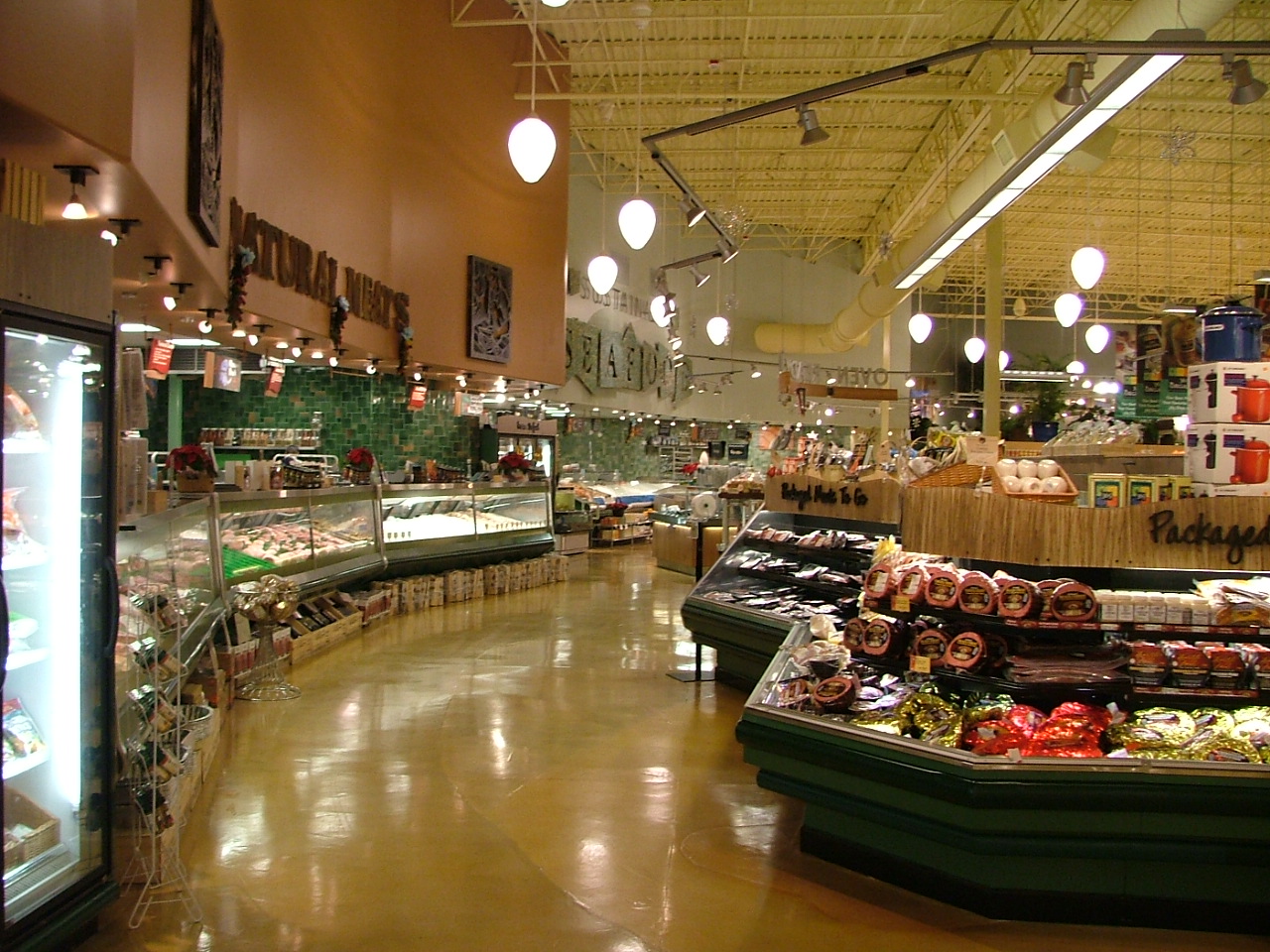

Supermarkets were so passé!
A dimly lit interior. An aging hippie with greasy ponytailed hair sits behind the register reading the latest issue of High Times. The aisles are replete with all the carob chips and high fiber cereals one can eat. Milling about, an aging lesbian couple (bearing a striking resemblance to Annie Liebowitz and Susan Sontag in ill-fitting denim and Birkenstocks) parse over various granola brands. Folk music or (better yet) a live acoustic guitar player provide the musical accompaniment.
Such was the mise-en-scene of the American Natural and Organic Food Store before the 21st century; before entrepreneurs realized that big money was waiting to be made on people's fetish for all things "natural" and "organic." And before consumers, that is, white upper-middle class consumers, realized that shopping at "regular" grocery stores was as gauche as choosing Taco Bell over Chipotle. It was the era that the anti-grocery store grocery store cleaned house.
Shopping at Whole Foods Market is an epicurean fantasy. The vegetables are gloriously fresh and beautifully labeled. The salad bar features all-American potato salad and exotic Indian curries, with all cuisines in-between. The environment is clean, spacious and tasteful. It is a modern bourgeois fantasy-land; fawning over the panoply of plenty, food shoppers assume a kind of existential import that justifies the extreme price-tag that is part and parcel with any trip down Whole Foods' check-out lane. This is expensive grub. Like, feed-Nairobi-for-a-week-off-the-cost-of-one-trip-expensive. But, there is the vague sense that buying such steeply priced produce is actually an investment in the environmental welfare of planet earth. The nebulous connection between organic food and environmental concern (a link necessitated by prosperous-liberal guilt) has been one of the major catalysts in the success of Whole Foods, even if the causal connection between a $3 apple and lower greenhouse gas emissions remains deductively elusive to most consumers. We like to take their word for it. Those who look closer may find a dark underbelly beneath all the the free-range squab and Manchego wedges but, for most, Whole Foods remains the nirvana of grocery shopping. But, like all wallet-shrinking activities, one, or at least most, can't indulge every day. For daily cheap foodstuffs that nonetheless fan the flames of our quasi-healthy, would-be ethical culinary aspirations, we travel to another popular organic food chain.
Though Trader Joe's opened it's first store in 1967, it was in the Aughts that Joe's reached total food-retail domination. Selling curiously affordable "natural" and "organic" food with nary a name brand in sight, Trader Joe's became the grocery store for people who wanted to shop at Whole Foods but couldn't afford to take out a second mortgage on their already devalued real estate. And what's really special about Joe's? The wine! 2 buck chuck made winos of us all (or at least me) and proved so popular even the New Yorker wrote a feature article about it. I mean, it's not good wine....but it's not bad either. And did I mention it's two-bucks? It is. It's two bucks. A bottle. A coke at a deli is $1.50. Get it? Two buck chuck is a miracle. That's Joe's secret weapon. Oh, and it's employees are really fuckable. So what that Joe's is now owned by a German discount grocery conglomerate? That shouldn't diminish the allure of Joe's as the organic, which is to say upscale, choice for the anti-corporate every-man, should it?
You AUGHT to remember...

No comments:
Post a Comment